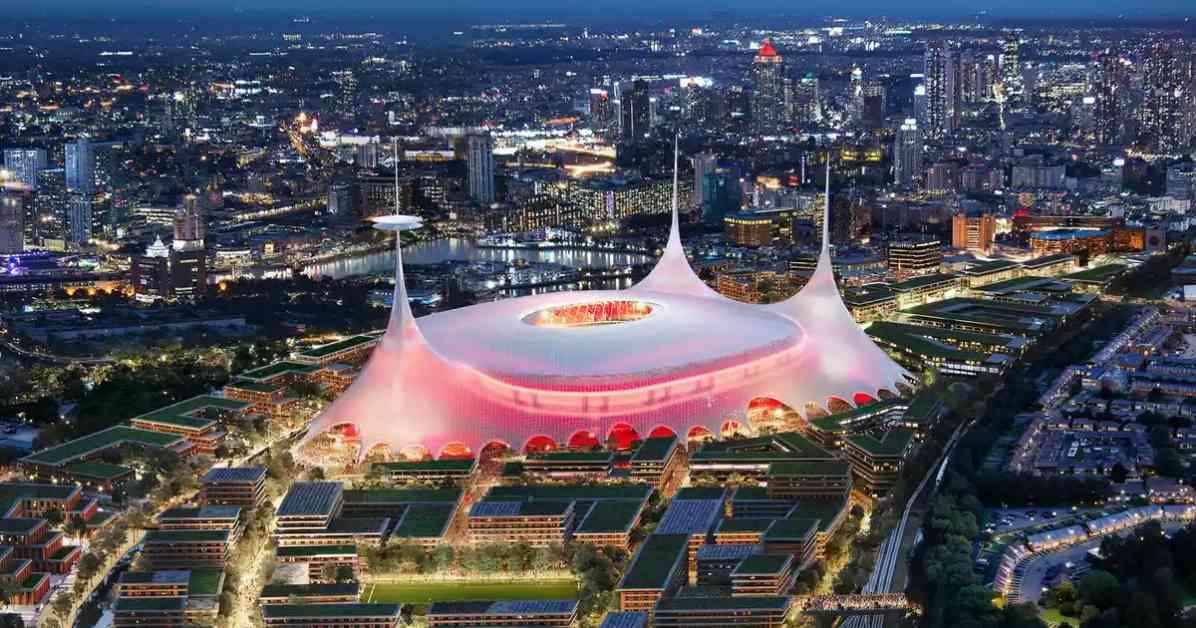Manchester United, a globally renowned soccer team, has recently announced plans to construct a new 100,000-seat stadium, setting the stage for a monumental project led by Foster + Partners, a prominent British architectural firm under the leadership of the acclaimed Norman Foster.
The primary goal of this ambitious endeavor is to uphold the rich heritage and essence of Old Trafford, the iconic home ground of the club, while simultaneously providing fans with a cutting-edge and sustainable stadium experience. Designed with a keen focus on sustainability, the new Manchester United stadium will feature a pedestrian-friendly layout, excellent accessibility via public transportation, and ample green spaces for visitors to enjoy. Additionally, the venue will be equipped with a protective canopy surrounding the stands to shield spectators from inclement weather conditions, all while efficiently collecting rainwater for sustainable use.
Describing the project as a “mixed-use miniature city of the future,” Norman Foster emphasized the innovative nature of the stadium’s design, highlighting its potential to drive growth and establish a global landmark that resonates with the people of Manchester. Foster’s vision for the new stadium goes beyond mere infrastructure; it aims to cultivate an unparalleled match-day atmosphere that brings fans closer to the action while setting a new standard for sustainability and connectivity on a global scale.
Lord Sebastian Coe, chair of the Old Trafford Regeneration Task Force, hailed the project as a transformative urban regeneration initiative, drawing parallels to the significant impact of the 2012 London Olympics on the UK. The new stadium is envisioned as a catalyst for economic and social revitalization in the Greater Manchester area, with projections indicating substantial contributions to the region’s economic growth, job creation, housing development, and tourism sector.
However, amidst the anticipation and optimism surrounding the project, several critical questions remain unanswered. Concerns have been raised about the funding mechanism for the new stadium, especially in light of reports indicating Manchester United’s significant debt exceeding £1 billion. This financial predicament has prompted Sir Jim Ratcliffe, a minority owner of the club, to implement cost-saving measures amid a challenging season for the team. Despite the uncertainties, Foster’s team is poised to commence construction within the next five years, leveraging prefabricated modular components for efficient delivery via the Manchester ship canal.
In a statement reflecting the club’s commitment to progress and innovation, Sir Jim Ratcliffe expressed enthusiasm for the transformative impact of the new stadium on the fan experience and the broader community. While acknowledging the historic significance of Old Trafford, Ratcliffe emphasized the need for a state-of-the-art facility that not only preserves tradition but also enhances the overall spectator experience, positioning Manchester United at the forefront of world-class sports venues.
With the unveiling of plans for the new 100,000-seat stadium, Manchester United embarks on a journey toward creating a sporting landmark that marries tradition with modernity, sustainability with innovation, and community engagement with global appeal. As the project unfolds, the club’s faithful supporters and the city of Manchester eagerly anticipate the realization of this architectural marvel that promises to redefine the fan experience and leave a lasting legacy for generations to come.












